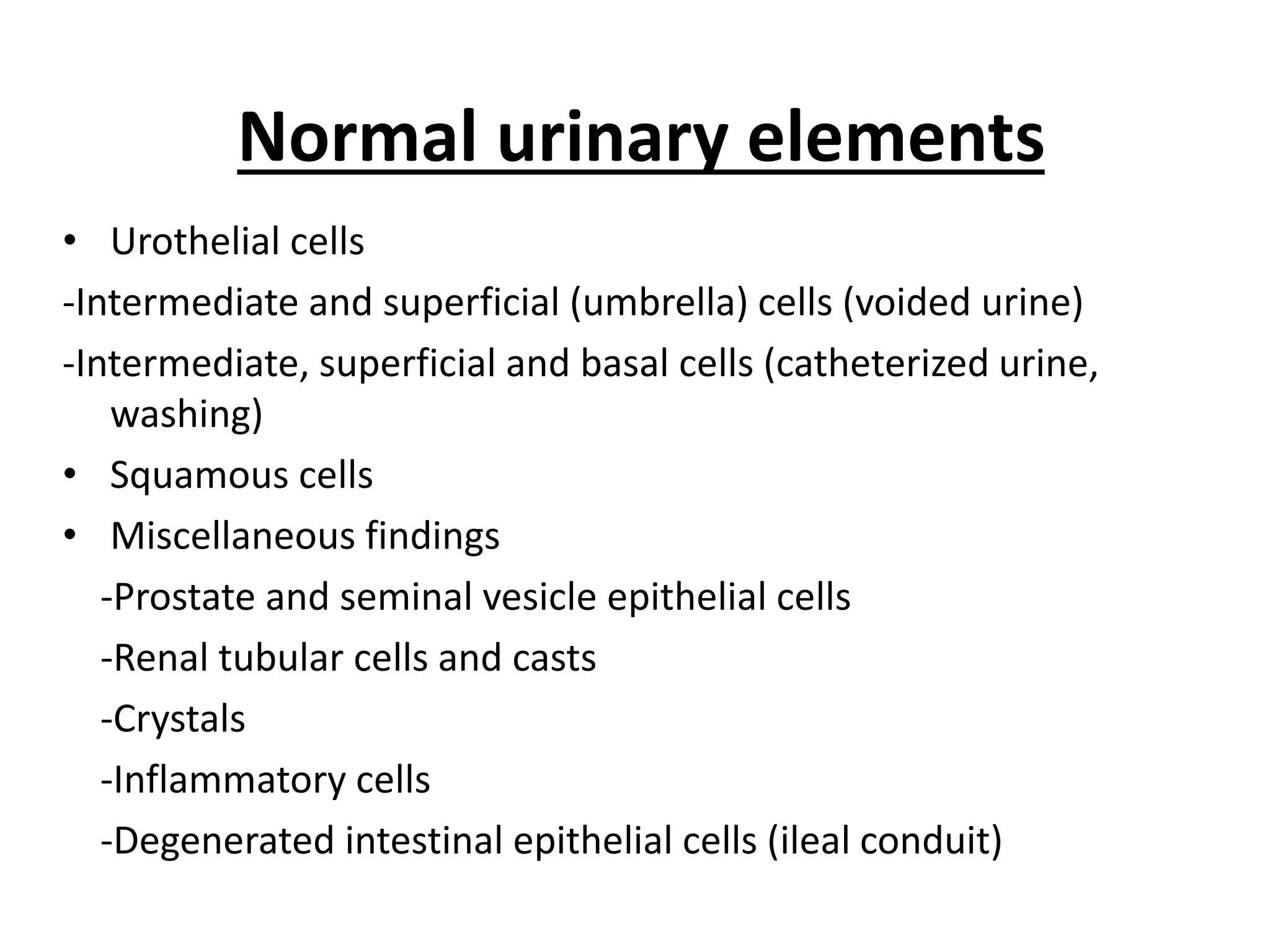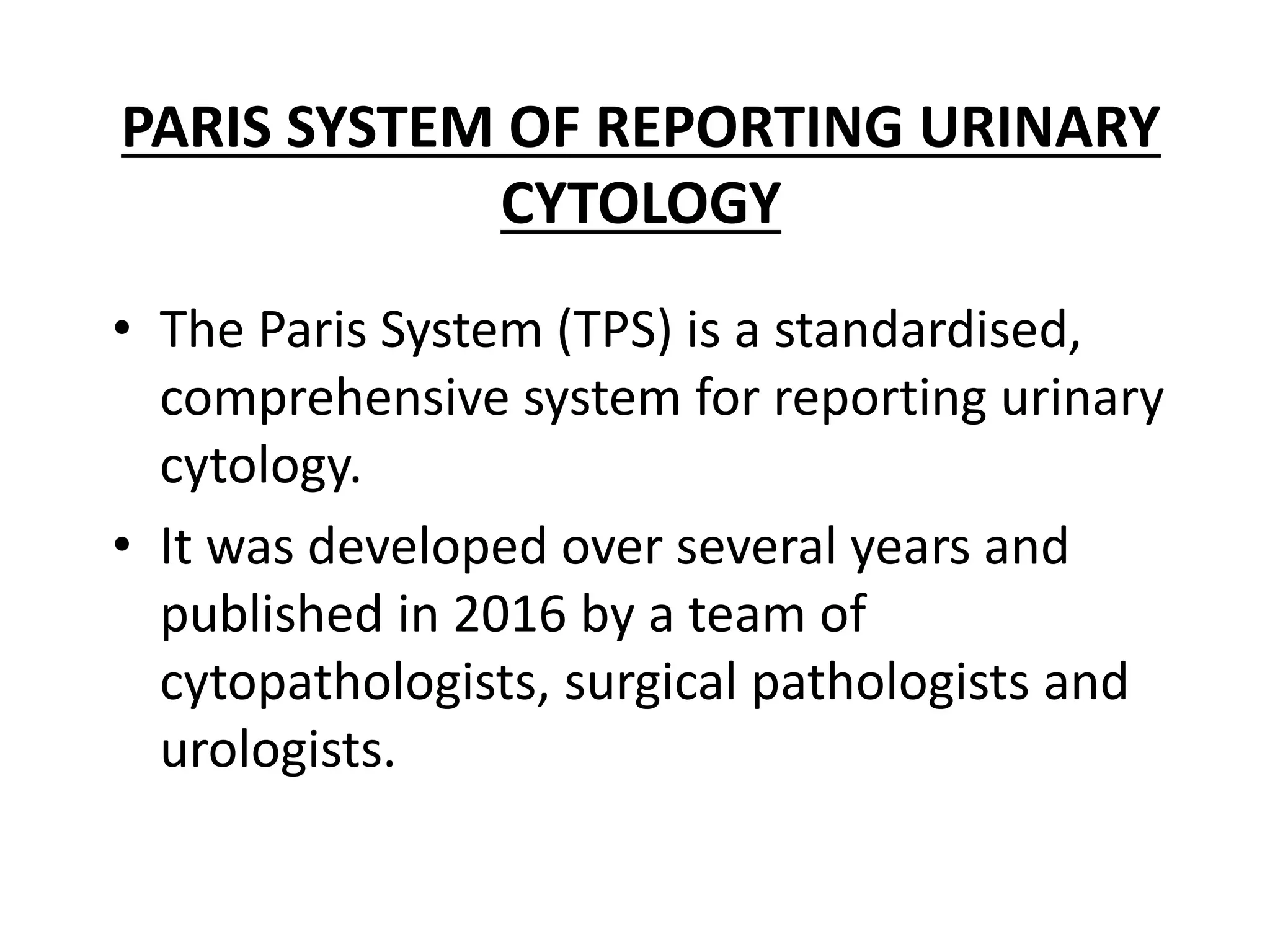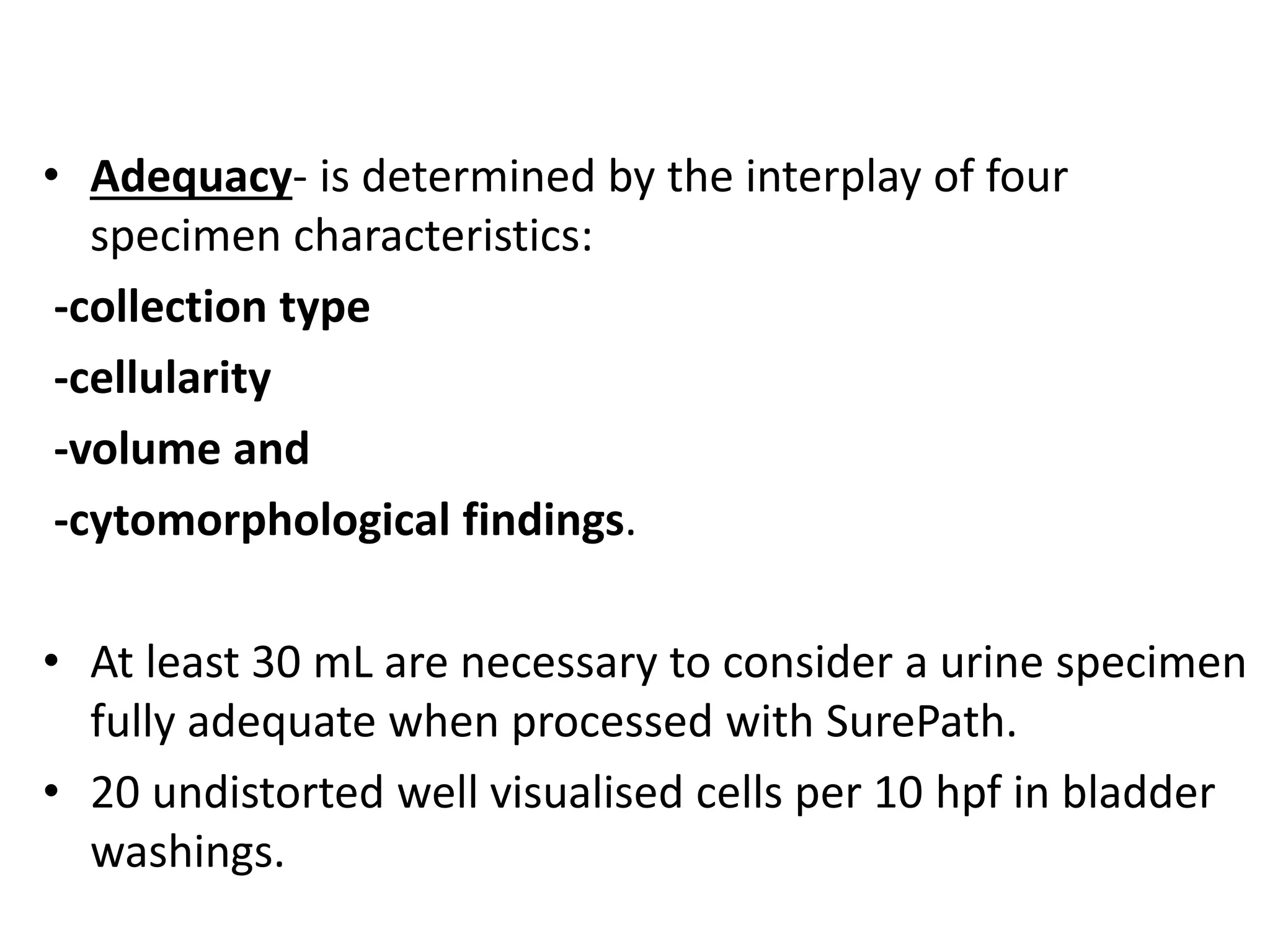The Paris System provides a standardized approach for reporting urinary cytology results with the aim of improving reproducibility and communication. It defines categories for negative, atypical urothelial cells, suspicious for high-grade urothelial carcinoma, and high-grade urothelial carcinoma based on nuclear and cytoplasmic features. Low-grade urothelial neoplasia requires the presence of three-dimensional clusters with fibrovascular cores. The system also provides guidance on specimen adequacy and the assessment of other malignancies and clinical management. Validation studies are still needed but the goal is to reliably detect high-grade urothelial neoplasia.


















































